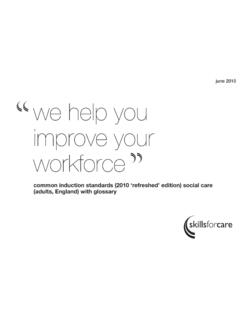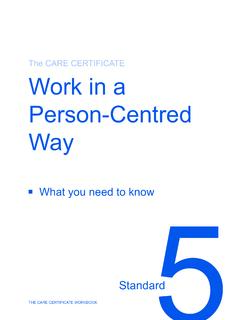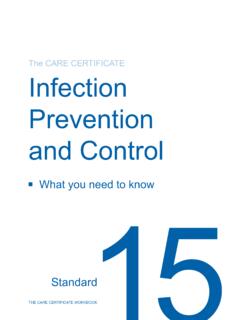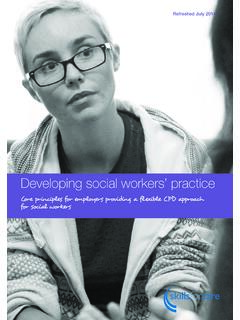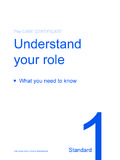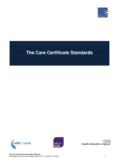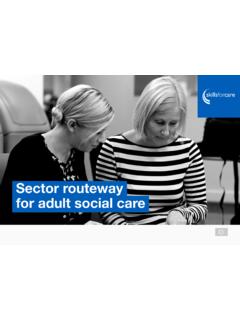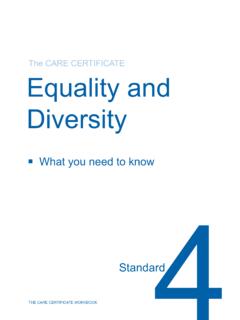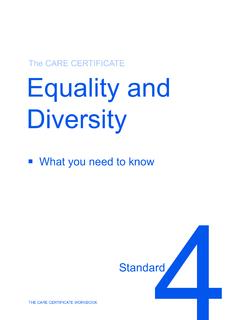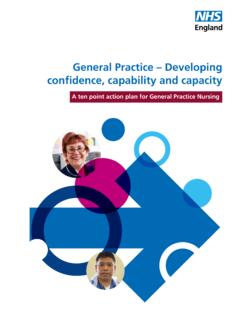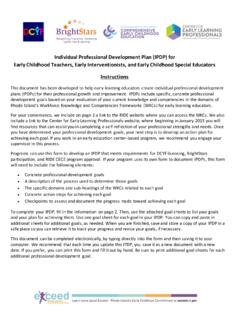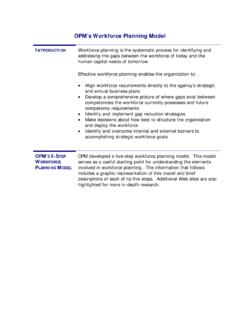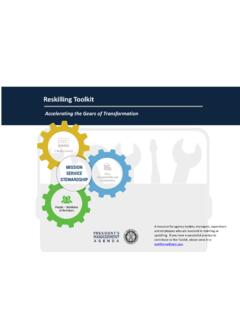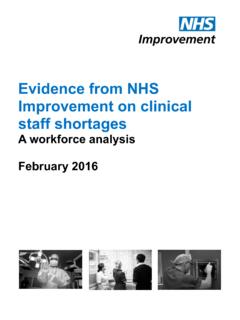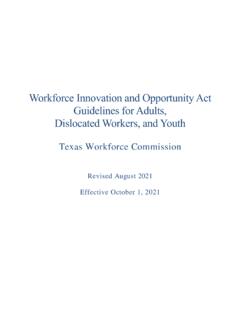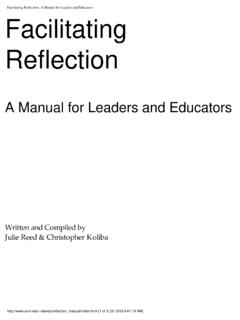Transcription of A positive and proactive workforce - Skills for Care
1 A positive and proactive workforceA guide to workforce development for commissioners and employers seeking to minimise the use of restrictive practices in social care and health Ministerial forewordInvestigations into abuses at Winterbourne View Hospital and Mind s Mental Health Crisis in Care: physical restraint in crisis (2013) showed that restrictive interventions have not always been used only as a last resort in health and care. They have even been used to inflict pain, humiliate or punish. Restrictive interventions are often a major contribution to delaying recovery, and have been linked with causing serious trauma, both physical and psychological, to people who use services and staff.
2 These interventions have been used too much, for too long and we must change is overwhelming support for the need to act. Over 95% of respondents were supportive in consultation. The Royal College of Nursing Congress voted by 99% in favour of new guidelines. Whilst I appreciate there may be times when restrictive interventions may be required to protect staff or other people who use services, or the individuals themselves, there is a clear and overwhelming case for is about ensuring service user and staff safety, dignity and respect. This is absolutely not about blaming staff. Whilst at Winterbourne there was clearly abuse and this must not be allowed to happen, we know that many staff have just been doing what they have been trained to do and have been struggling in difficult situations and often with very little need to equip these individuals with the Skills to do things differently.
3 The guidance makes clear that restrictive interventions may be required in life threatening situations to protect both people who use services and staff or as part of an agreed care positive and proactive Care and a positive and proactive workforce provide a framework to radically transform culture, leadership and professional practice to deliver care and support which keeps people safe, and promotes recovery. I want to thank the Royal College of Nursing for leading the multi-professional consortium who led on developing the Department s guidance and Skills for Care and Skills for Health in developing the complementary guidance to support the commissioning of learning and development .
4 This was a great example of organisations working together to deliver high quality products that affect all of guidance is only one part of the story. From April 2014, DH will launch a new, wider two-year initiative positive and Safe to deliver this transformation across all health and adult social care. We will identify levers to bring these changes about including improving reporting, training and governance. DH will also develop accompanying guidance in relation to children, young people and those in transition in healthcare look forward to working with you to co-produce this programme. Through positive and Safe we have the potential to make whole scale system-wide changes, ensuring we have a modern, compassionate and therapeutic health and care service fit for the 21st LambMinister for Care and SupportContents1.
5 Executive summary 1 Key points 2 Acknowledgements 32. Introduction 5 The purpose of this guide 5 Why you should read this guide 6 People in need of care and support.
6 And patients 6 Workers 6 Employers and managers 6 Commissioners, regulators and inspectors 9 Safeguarding leads 9 Shared key principles 9 What do we mean by restrictive practices 10 Diagram illustrating how restrictive practices and restrictive interventions can be seen within a human rights based model of positive and proactive
7 Support 12 The legal and ethical justification for restrictive practices 13 Pain 13 How to identify when a practice is a restrictive practice or intervention 13 Flowchart to show considerations about whether restrictions are legally and ethically justified 15 Edie s story 173.
8 Effective workforce development to minimise the use of restrictive practices 18 Organisational values into practice 19 How to design, recruit and retain the workforce you need 19 Data collection and use 20 Being a person-centred organisation 20 Person-centred thinking 22 Designing support and care that works
9 24 Commissioning social care and health 24 The right staff 25 Designing staff structures to minimise restrictive practices 25 Recruiting and retaining the right workers 26 Supporting workers 26 Supervision 27 Other support 28 De-briefing 28 Developing your
10 workforce s Skills and knowledge 28 Identifying workforce Skills and knowledge 28 Skills and knowledge development 29 Choosing the right learning provider 31 Planning and purchasing learning and development 32 The learning provider s role 334.
